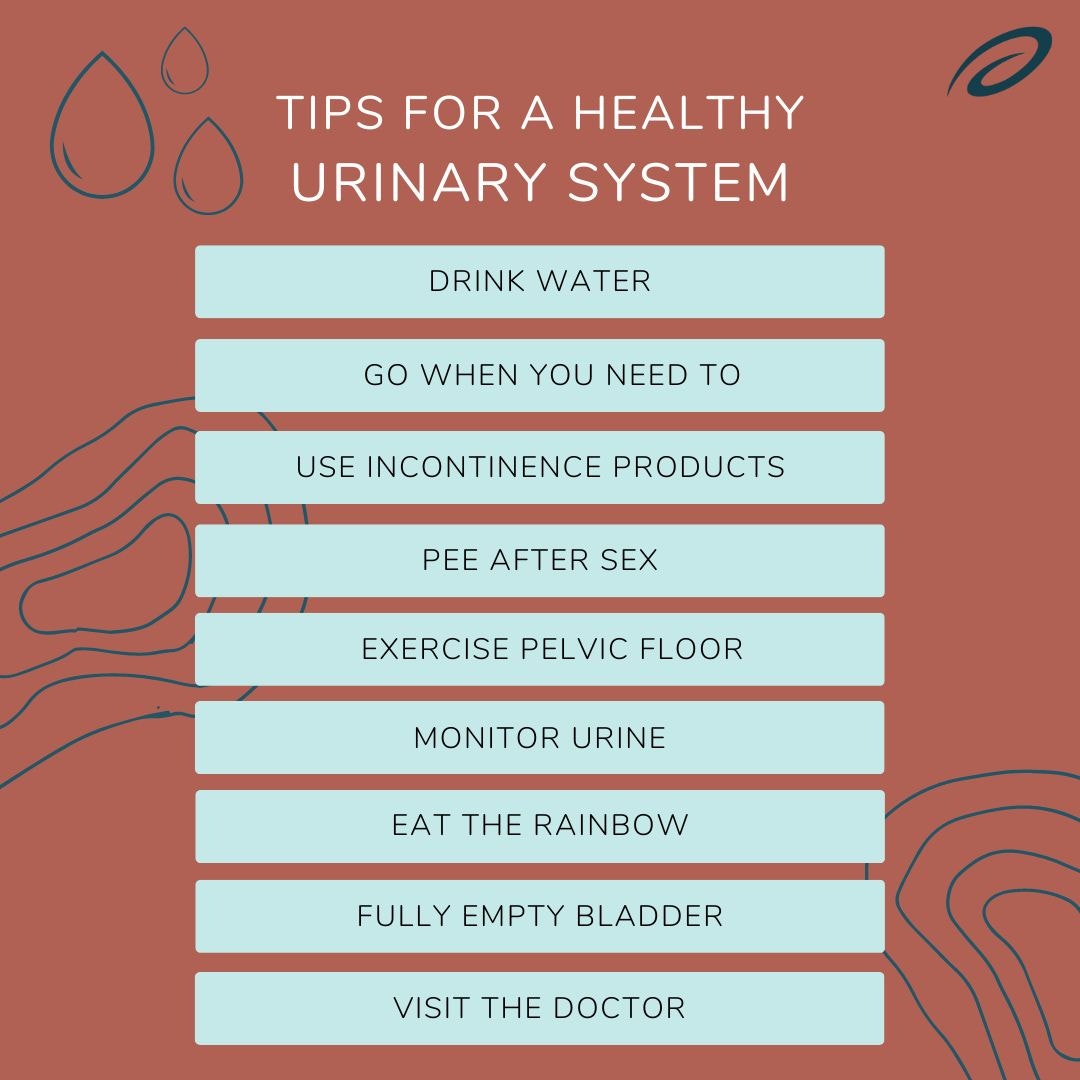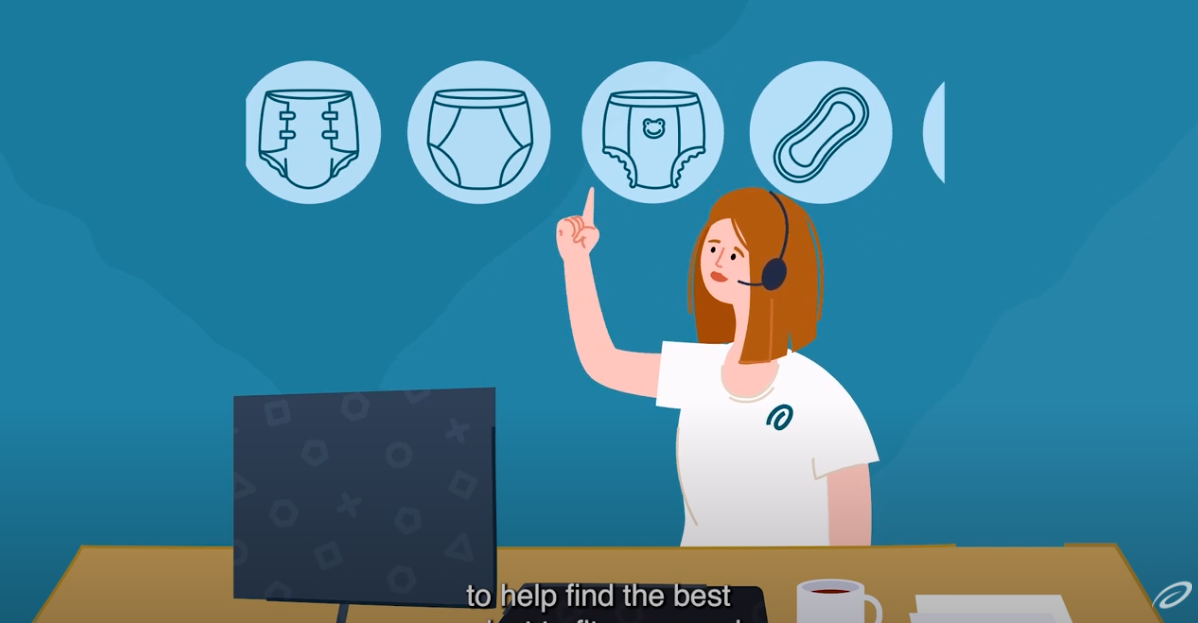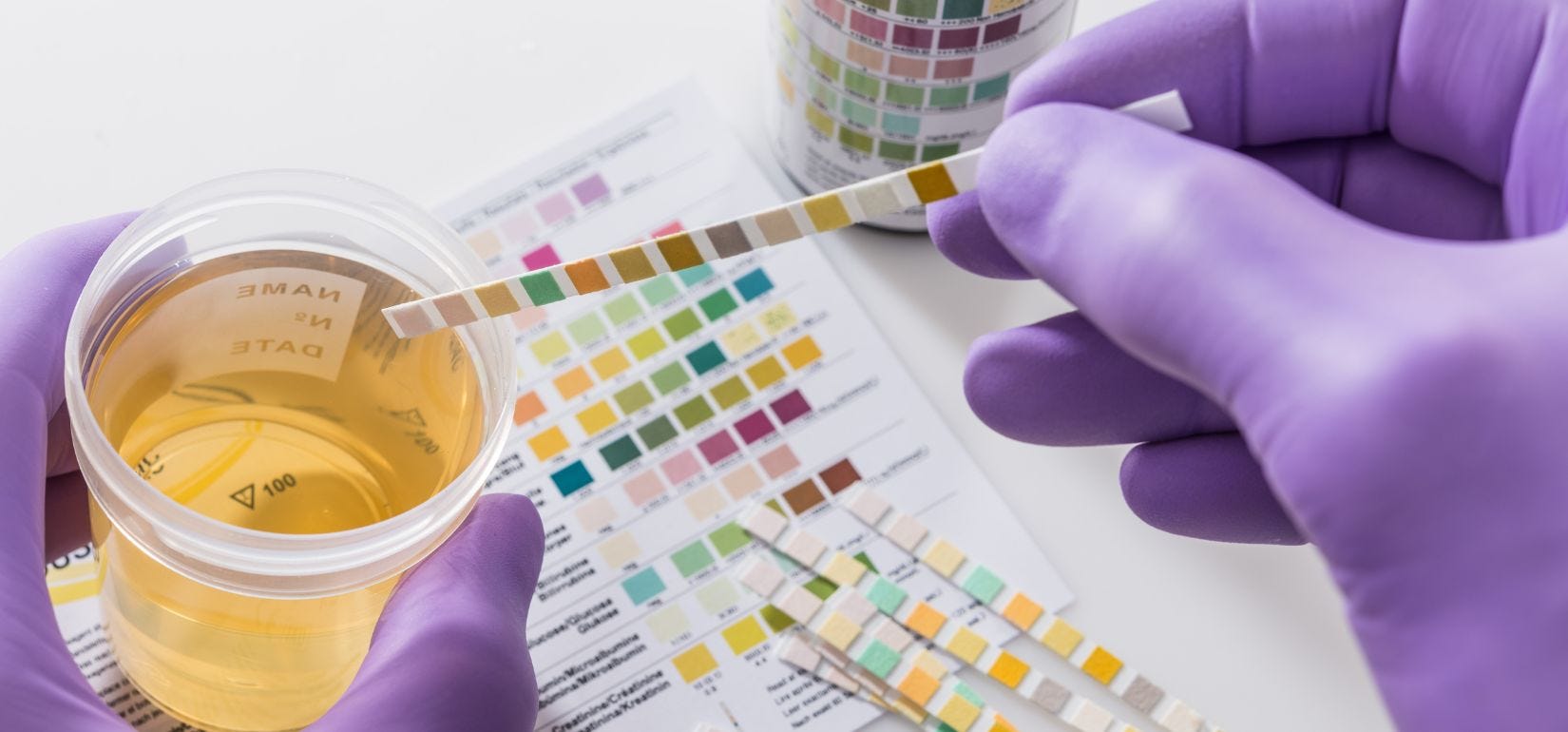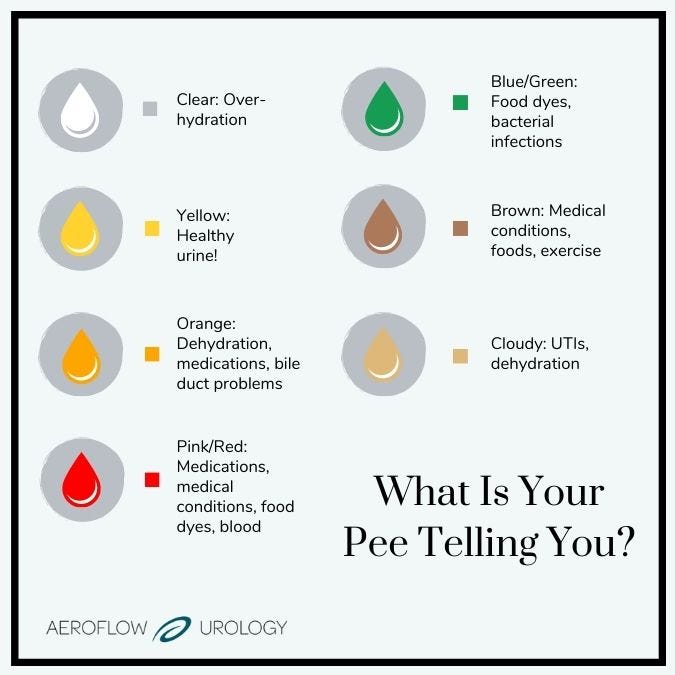Your urine can tell you a surprising amount about your health. From dehydration to urinary tract infections, the color of your pee is a window into your urinary system!
Read this post to learn what your urine says about your bladder health and get some tips on improving it.
Your Urinary System
Your kidneys, uterus, bladder, urethra, and renal pelvis are all a part of the urinary system. Your urinary system plays a vital role in keeping your body healthy. It has many jobs, including:
- Filtering waste, water, and blood in the body.
- Regulating blood pressure.
- Regulating red blood cell production.
- Balancing chemicals in your body.
When you eat food or drink liquids, your body takes the nutrients it needs and leaves behind waste in your bowels and blood.
Check Your Eligibility
2 Easy Steps
Discover the continence care essentials available through your Medicaid plan.
Your urinary system then filters these leftover waste products through your body and out of your urine and fecal matter.
Regular Urination
When you have a healthy urinary system, you urinate about six to eight times in 24 hours. If you are not voiding completely or urinating too frequently, you may have incontinence. Several types of incontinence can contribute to an unhealthy urinary system:
Stress incontinence: Leaking urine when you sneeze, cough, laugh, lift heavy objects, or exercise.
Urge incontinence: Feeling like you need to urinate urgently and often, leading to urine leaks, also known as overactive bladder (OAB).
Overflow incontinence: The inability to void your bladder completely, leading to overflow leakage.
Mixed incontinence: Two or more types of incontinence mixed together.
Managing incontinence symptoms can be stressful, but Aeroflow Urology can help! We provide free incontinence products through Medicaid and private insurance plans. To see if you qualify, fill out our eligibility form.
Why Urine Changes Color
Urochrome is the pigment that gives urine its yellow color. When you pee in a toilet, the color is diluted with water so it can make your urine look less concentrated. The darker yellow your urine is, the more dehydrated you are. This is because water and fluids (hydration) dilute your urine. Certain foods and dyes can also turn your urine different colors other than yellow.
Colors of Urine & What They Mean
The color of your urine can reveal what medications you take, what your diet consists of, and even if you have a bacterial infection.
Clear
Clear urine usually reveals overhydration. When you drink too much water, you cause your body to flush electrolytes out of your urinary system.
Yellow
Pale yellow shades indicate hydration and health. It can also mean you have a healthy diet and urinary system. Bright yellow urine usually indicates an excess of B vitamins, and a dark yellow may indicate dehydration.
Orange
Dehydration is a common cause of orange urine. Certain medications, such as rifampin or yeast infection medications, and medical conditions cause this color pigment. You could have a bile duct condition if your urine is orange. This color may also be a reflection of an increased intake of beta-carotenes in your diet (sweet potatoes, winter squash, etc.).
Pink / Red
Pink urine or reddish urine can be a side effect of certain medications. In addition, it can signify medical conditions, such as kidney stones, an enlarged prostate, bladder stones, or bladder tumors. Pink or red urine can also be caused by eating certain red or pink foods, such as rhubarb or beets.
Very red-colored urine could be blood, so be sure to watch for those deeper hues.
Blue / Green
Blue or green urine can be caused by foods that you eat blueberries, as well as food dyes and additives. It can be an indicator of medical conditions, such as blue diaper syndrome (a rare genetic disorder where you cannot break down tryptophan in your digestive tract). During surgeries, healthcare providers may also use dyes to turn your urine blue or green. In rare cases, blue or green pigments can reveal a bacterial infection or genetic disease. This color of urine might also indicate a urinary tract infection (UTI).
Brown
Brown or dark brown pee can be caused by medical conditions, certain foods, intense exercise, liver concerns and failure, and severe dehydration. Medications, such as iron supplements, laxatives that contain cascara, nitrofurantoin / Macrobid, chloroquine, metronidazole, and phenytoin can also cause brown urine.
Cloudy
If your urine is cloudy, you may not be drinking enough fluids, have a urinary tract infection (UTI), or have kidney problems, such as chronic kidney disease (CKD). In addition, cloudy urine is usually accompanied by a foul urine smell.
Keeping Your Urinary System Healthy
You should always pay attention to urine color changes since it could indicate something more serious happening in your body that’s gone undetected.
If your urine is any color besides yellow, try not to panic.
Sometimes the different colors can be due to food dyes or medications, but if the stranger colors persist, see a healthcare provider to rule out any underlying medical conditions.
Use the following tips to keep your urinary system healthy.
Drink the Right Amount of Water
Stay hydrated, but not too hydrated! Men should aim to drink around 15.5 cups of water per day and women should drink around 11.5 cups. If you drink more than that, you may be flushing the electrolytes your body needs, creating dehydration.
Go When You Need To
Don’t hold in your urine or fecal matter. Instead, use the bathroom when needed, and be sure you’re giving yourself enough time to go.
Use Incontinence Products
Try incontinence products, such as bladder pads or adult briefs, to keep you dry and comfortable day and night if you're managing incontinence symptoms. You can get free incontinence supplies through Aeroflow Urology if you qualify.


Urinate After Sex
Sex can bring bacteria into your urethra, leading to bacterial infections like UTIs. Always pee after sex and wipe properly.
Exercise Your Pelvic Floor
Pelvic floor exercises can help you strengthen your pelvic floor which is an integral part of urinary system health. These are for both men and women.
Monitor Your Urine
Monitor urine in a 24-hour time frame. If you notice a color change in your urine, try drinking water for 24 hours. If it doesn’t change back to a healthy yellow color after that amount of time, see a healthcare provider.
Eat the Rainbow
Eat a healthy, rainbow-colored diet. If you stick to just certain foods with dyes in them, they may turn your urine odd colors. Instead, eat a variety of healthy fruits, vegetables, and grains that will keep your urinary system healthy. Avoid bladder irritants like caffeine, alcohol, and spicy foods!
Empty Your Bladder Completely
Empty your bladder fully. When you go to the bathroom, make sure you’re giving yourself enough time to go. This allows you to empty your bladder completely, lowing your risk of bacterial infections and certain types of incontinence.
Visit Your Doctor
Regularly seeing a healthcare professional or urologist can help you monitor your urinary system health.
How Aeroflow Urology Can Help

If you’re managing incontinence symptoms, Aeroflow Urology may be able to provide you with low-cost or free incontinence supplies through your Medicare or other insurance plans. Follow our three steps to get started today.
- Fill out the qualify form.
- Once you’ve qualified, one of our Continence Care Specialists will contact you about the next steps in the process.
- After choosing your incontinence products, they’ll be shipped directly to your front door each month in discreet packaging.
Information provided on the Aeroflow Urology website is not intended as a substitute for medical advice or care from a healthcare professional. Aeroflow recommends consulting your healthcare provider if you are experiencing medical issues relating to incontinence.











